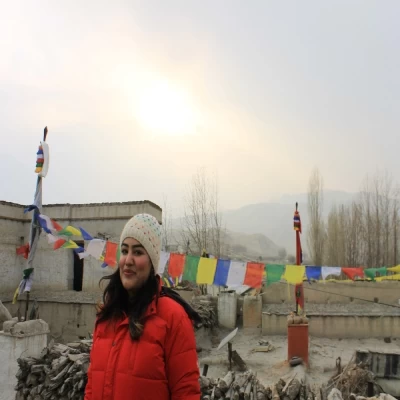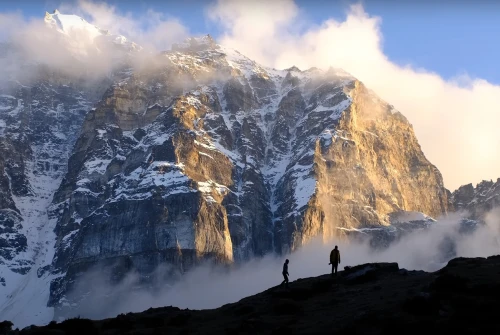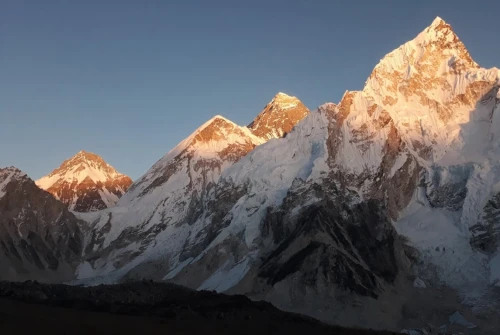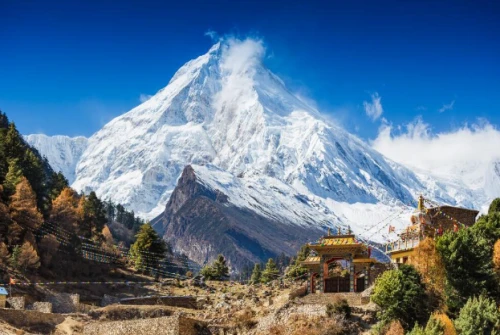Trek Overview
Kanchenjunga Base Camp Trek
The Kanchenjunga Base Camp Trek is one of the most remote and untouched treks in Nepal. Named after the third-highest mountain in the world, this trek offers a wild and isolated adventure through the far eastern Himalayas. Unlike more commercial routes, Kanchenjunga remains off-the-beaten-path, allowing trekkers to experience pristine nature and traditional mountain cultures without the crowds. The route often leads you through lush forests, narrow river valleys, and into high alpine terrain where the views of the massive Kanchenjunga range dominate the horizon. The journey typically splits into two camps—north and south base camps—each with its own unique landscapes and challenges.
Everest Base Camp Trek
The Everest Base Camp Trek is arguably the most iconic trek in the world. It draws thousands of adventurers every year, all eager to stand at the foot of Mount Everest, the planet’s highest peak. The trail winds through the heart of the Khumbu region, following ancient footpaths used by local Sherpas. Along the way, trekkers pass through bustling mountain villages, ancient monasteries, and high-altitude glaciers. While the Everest trek is more popular and developed, it doesn’t skimp on natural beauty. Towering peaks like Ama Dablam and Lhotse flank the trail, and the opportunity to glimpse Everest up close is an emotional experience for many.
Accessibility
Transportation to Kanchenjunga
Getting to the Kanchenjunga region is a trek in itself. First, you’ll need to fly from Kathmandu to Bhadrapur, a city in eastern Nepal. From there, a long and rugged jeep ride—often taking over 10 hours—will take you to Taplejung, the starting point of the trek. Roads in this area are poorly developed, and the journey requires patience and resilience. This limited accessibility is both a drawback and a blessing. It makes logistics more challenging, but it also means fewer crowds and a more authentic trekking experience.
Transportation to Everest Base Camp
By contrast, the Everest Base Camp trek is very accessible. Trekkers typically take a short 35-minute flight from Kathmandu to Lukla, landing at one of the world's most thrilling airstrips. This flight eliminates the need for lengthy drives and gets you straight into the mountains. Because Lukla serves as the entry point to the Everest region, infrastructure is much more developed. Guesthouses, guides, and porters are readily available, making it easier for travelers to plan their trip efficiently.
Trek Duration & Distance
Kanchenjunga Trek
The Kanchenjunga trek is a long-haul adventure that usually takes between 20 to 26 days to complete. This includes time for acclimatization and travel to and from the region. The total distance covered can exceed 220 kilometers, depending on whether you visit both the north and south base camps. Its extended duration means you’ll need to be prepared for several weeks in rugged conditions, often without access to modern comforts.
Everest Base Camp Trek
The Everest Base Camp trek is considerably shorter and can typically be completed in 12 to 14 days. This includes two acclimatization days and the round-trip hike to base camp. The total distance is around 130 kilometers, but the trek is physically demanding due to the altitude. Its shorter length makes it a more feasible option for those with limited time but still looking for a full Himalayan experience.
Difficulty Level
Kanchenjunga
Kanchenjunga is widely regarded as one of the most challenging treks in Nepal. The trails are remote, often steep and rugged, with limited accommodation and logistical support along the way. Trekkers face long walking days and must carry more supplies, especially in areas without teahouses. The trek also involves multiple passes and crossings over high-altitude terrain, requiring strong endurance and experience.
Everest Base Camp
Everest Base Camp is considered moderately challenging. Although the altitude and terrain are tough, the trail is well-trodden, and numerous lodges and support services are available. The infrastructure makes it accessible even for first-time trekkers, provided they are in good physical shape and properly acclimatize. Still, it's not an easy walk and requires preparation, especially for dealing with thin air at high altitudes.
Altitude & Acclimatization
Both treks climb to elevations above 5,000 meters, where the risk of altitude sickness becomes significant. On the Kanchenjunga route, trekkers ascend to around 5,140 meters, and because the region is remote, access to medical care is limited.
Proper acclimatization and gradual ascent are crucial to staying safe. Everest Base Camp reaches approximately 5,364 meters, but the route is designed with built-in acclimatization days in places like Namche Bazaar and Dingboche. Additionally, because it’s a more traveled path, help is easier to find in case of emergencies, and helicopter rescues are more readily available.
Scenery & Landscape
Kanchenjunga Region
The Kanchenjunga trek offers unparalleled natural beauty. The trail takes you through a dramatic progression of ecosystems—from subtropical forests to high alpine meadows and glacial valleys. Trekkers are often struck by the untouched charm of the region, with dense rhododendron forests, thundering rivers, and panoramic views of towering peaks like Kanchenjunga, Jannu, and Kabru. Because it's less developed, the landscape feels raw and wild, offering a deep connection with nature.
Everest Region
The Everest region is equally stunning but offers a more varied visual experience due to the presence of bustling Sherpa villages and religious landmarks like stupas and prayer wheels. The highlight, of course, is the continuous sight of massive peaks including Everest, Lhotse, Nuptse, and Ama Dablam. Glaciers, deep valleys, and the famous Khumbu Icefall add to the scenic richness. The combination of dramatic landscapes and cultural elements makes every day visually engaging.
Cultural Experience
Kanchenjunga
Culturally, the Kanchenjunga trek provides insight into eastern Nepalese ethnic groups, particularly the Limbu and Rai communities. Trekkers can witness traditional farming methods, distinct dialects, and unique rituals. It’s an enriching experience for those who enjoy deep cultural immersion, as this region has preserved its traditions without much influence from tourism.
Everest
The Everest region is home to the Sherpa people, who have gained global recognition for their mountaineering skills. Trekking through villages like Namche Bazaar and Tengboche offers a chance to learn about Tibetan Buddhism, visit ancient monasteries, and understand the Sherpa way of life. Cultural festivals, spiritual practices, and warm hospitality are all part of the Everest Base Camp experience.
Accommodation & Facilities
Kanchenjunga
Accommodations along the Kanchenjunga route are basic, mostly small teahouses or community-run lodges. In some remote sections, camping might be necessary. Meals are simple and supplies limited due to the difficulty in transporting goods. This rugged infrastructure requires trekkers to be more self-reliant.
Everest Base Camp
In contrast, the Everest trail is lined with a range of accommodations—from budget teahouses to relatively luxurious lodges. Facilities include Wi-Fi, hot showers, and a wide menu selection in many areas. This makes it more comfortable and manageable, especially for international tourists.
Cost Comparison
Kanchenjunga
Due to its remoteness and extended duration, the Kanchenjunga trek is generally more expensive. Costs include multiple permits, long-distance transport, and often the hiring of guides and porters. Expect to spend between $2,000 and $2,500 for a guided trek.
Everest Base Camp
The Everest trek is more affordable, with average costs ranging from $1,200 to $1,600. Its popularity means more competition among tour operators, which helps keep prices reasonable. Additionally, the shorter duration helps lower overall expenses.
Best Time to Trek
Kanchenjunga
The best months to trek Kanchenjunga are March to May and September to November. Spring brings blooming rhododendrons, while autumn offers clear skies and pleasant temperatures. Winter and monsoon seasons are generally discouraged due to snow and rainfall.
Everest Base Camp
Everest Base Camp follows the same seasonal guidelines. Spring and autumn are optimal for clear views and stable weather. Spring is particularly appealing for photographers, while autumn is known for crisp air and fewer clouds.
Wildlife & Flora
Kanchenjunga Region
The Kanchenjunga Conservation Area is a haven for biodiversity. It is home to elusive species like the red panda, snow leopard, and Himalayan black bear. Trekkers often spot langurs, pheasants, and unique flora like orchids and magnolias along the trail.
Everest Region
The Sagarmatha National Park, a UNESCO World Heritage site, supports species such as Himalayan tahr, musk deer, and various high-altitude birds. While wildlife is harder to spot due to increased human activity, the park still holds significant ecological value.
Permit Requirements
Kanchenjunga
Restricted Area Permit (RAP)
Kanchenjunga Conservation Area Permit (KCAP)
Trekkers' Information Management System (TIMS) Card
Guides are mandatory for this trek due to its remote and protected status.
Everest Base Camp
Sagarmatha National Park Entry Permit
Khumbu Pasang Lhamu Rural Municipality Permit
TIMS Card (optional for some routes)
Guides are recommended but not mandatory.
Safety Considerations
Kanchenjunga
This trek is remote, and medical or rescue services are scarce. Trekkers must be well-prepared with proper gear, emergency supplies, and communication devices. Travel insurance with helicopter evacuation coverage is essential.
Everest Base Camp
Safety is better managed here due to the number of trekkers and the presence of rescue infrastructure. Helicopter services are readily available, and many lodges offer oxygen and first-aid support.
Environmental Impact
Kanchenjunga
With low traffic, Kanchenjunga’s ecosystem remains relatively undisturbed. However, limited waste management systems mean that trekkers must be cautious and practice Leave No Trace principles diligently.
Everest Region
The Everest trail suffers from over-tourism. Litter and waste have become concerns, but organizations and local authorities are actively working on eco-friendly solutions such as clean-up campaigns and waste management initiatives.
Comparison Table: Kanchenjunga vs. Everest Base Camp
Feature | Kanchenjunga Base Camp | Everest Base Camp |
Duration | 20–26 days | 12–14 days |
Distance | ~220 km | ~130 km |
Max Altitude | 5,140 meters | 5,364 meters |
Difficulty | Very Challenging | Moderate |
Accessibility | Remote, requires long drive | Easy, short flight to Lukla |
Cultural Exposure | Rai, Limbu communities | Sherpa culture |
Accommodation | Basic teahouses, camping | Wide range, including comfort lodges |
Cost | $2,000–$2,500 | $1,200–$1,600 |
Best Time | Spring & Autumn | Spring & Autumn |
Wildlife | High biodiversity (e.g., red panda) | Some wildlife, more human activity |
Permits Required | RAP, KCAP, TIMS | Park Permit, Local Permit |
Guide Required | Yes (mandatory) | No (recommended) |
Crowds | Very few | High |
Emergency Services | Minimal | Well-established |




